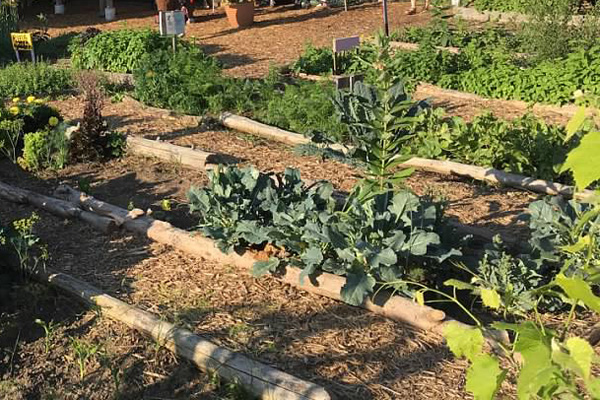The Ultimate Guide To City Blooming
Interested in expanding food up for sale in the City of Chicago? Considering starting a community garden? Adjustments to the Chicago Zoning Regulation enable agricultural usages like neighborhood gardens and urban farms in many parts of the city. Below is a listing of frequently asked concerns pertaining to the rules and guidelines that farmers must take into consideration when preparing an urban farming project.
The zoning change does not change any type of other codes taking care of composting, structure permits, buying or leasing City had residential property, company licenses or ecological contamination. There are existing codes that manage these issues and they stay completely effect and might be suitable to your job. Community yards are typically possessed or taken care of by public entities, public organizations or community-based companies and maintained by volunteers.
Urban farms grow food that is planned to be offered, either on a not-for-profit or for-profit basis. Due to their industrial objective, city farms require a service permit.
Not known Details About City Blooming
The amount of garden compost material can not exceed 25 cubic yards at any kind of provided time according to the standards in 7-28-715 of the City's Municipal Code. Because the soil at many new garden websites needs changing, garden compost, soil, wood chips, or various other products can be gotten to create or enhance the growing room.

If a structure authorization is required after that the hoophouse will be thought about an accessory structure. You can discover more regarding the building license demands by contacting the Department of Buildings. The 25,000-square-foot dimension limitation is planned to stop a solitary community yard from controling a given block or interfering with the block's existing residential or business personality.
The limitation does not relate to gardens found in Public Open Area (POS) areas. Can there be greater than one neighborhood garden that is 25,000 square feet on a single block? Yes. The dimension limit uses to individual yards, not to specific blocks. No. Fence is not required, nonetheless, gardens that have large vehicle parking areas might be needed to mount secure fencing or other landscaping features.
Examine This Report about City Blooming
B1 & B2 districts require that all business use tasks be performed inside. R areas limit industrial activity. The guidelines reflect the function and intent of the Zoning Code. Is fence required for city ranches? Yes. Fences may be required, together with landscape design and screening, for sure parking lot and outdoor work or storage space locations depending upon location and the specific task taking area.
Yes. Urban farms need structure licenses and zoning approvals prior to building and construction. Various other kinds of city review might be required relying on certain structures, tasks, dimension, landscape design, licensing, public heath and stormwater administration problems. Most of these needs are recognized in the job design or permitting procedure, nonetheless, the applicant might be liable to independently recognize specific licenses or allows that may be called for.
Yes. The type of certificate is established by what is taking place at the website. The Division of Service Matters and Consumer Security can assist figure out the certain type of organization permit that's required. Yes. Off road car parking is needed for many commercial projects in Chicago. The required number of vehicle parking areas is based on the variety of workers functioning on website and not the square footage of the expanding area.
The Ultimate Guide To City Blooming

Yes. An urban farm can offer compost product generated on website, nevertheless, the procedure has to follow the guidelines in 7-28-715 of the Chicago Municipal Code. Yes. Aquaponic systems are allowed indoors on metropolitan ranches in lots eco-friendly practices of zoning districts. Nonetheless, a zoning testimonial and structure authorization is needed in order to install structures or systems and a company certificate is called for as explained over.
As much as 5 hives or nests of honey might be maintained as an accessory use. However, beekeepers should sign up with the Illinois Division of Farming. For even more details concerning the recommended zoning modification you might speak to the Division of Housing and Economic Growth, Bureau of Preparation and Zoning at 312.744.8563.
, which takes location in rural locations at the edge of suburbs.
3 Easy Facts About City Blooming Explained
It can include an activity of natural growers, "foodies" and "locavores", who look for to develop social media networks based on a shared ethos of nature and community holism. These networks can establish using official institutional support, becoming integrated into regional town as a "transition community" movement for sustainable urban advancement.
In either case, the extra direct accessibility to fresh vegetable, fruit, and meat products that may be understood via city farming can boost food safety and food safety while lowering food miles, bring about reduced greenhouse gas emissions, thereby contributing to environment adjustment mitigation. Several of the initial proof of city agriculture originates from Mesopotamia.
Comments on “Unknown Facts About City Blooming”